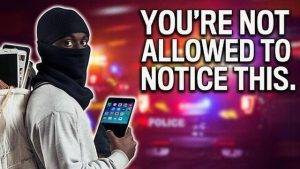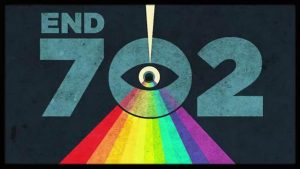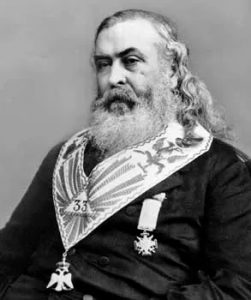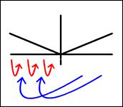“Nicaragua Betrayed” Summary— Chapter 13: September Offensive
by Edward Ulrich
News of Interest.TV
February 20, 2011
This chapter describes false claims being made in the media of Anastasio Somoza losing support of the people of Nicaragua; also described is Somoza’s forces repelling many concurrent attacks by Sandinistas, and a description of shocking dishonesties that the Carter “Human Rights Commission” engaged in against Nicaragua.
Following are key points from the chapter:
— From page 181:
After the terrorists were successful in their capture of the National Palace [described in Chapter 11], had their demands met and were safely ensconced in their havens, there was euphoria in Havana, Caracas, Panama City, San Jose of Costa Rica, and some areas of Washington.
TV viewers in San Jose, for example, were told that my government and I no longer had the popular support of the people. Some of the Sandinista leaders even boasted that Somoza’s time could now be counted in hours, because the people would rise up and overthrow the government. They went so far as to say that I could no longer count on the loyalty of the Guardia Nacional.
Perez believed this to be true as did Castro, Carazo, Torrijos, and Carter. All of these national leaders believed the wild stories being spread by the revolutionaries. They mistook compassion for weakness and disunity. They weren’t aware of the fact that the people of Nicaragua were still with me and the Government. The appraisal of the Communist revolutionaries, and their supporting international factions, was that the government and I had been dealt a fatal psychological blow— a blow from which there was no recovery. Again, how wrong they were.
— With the exception of a few in the military, there was unanimity of opinion in Nicaragua concerning Somoza’s decisions with the Hostage situation. People were grateful that the lives of the hostages had been spared. At this time Somoza had continued successes in routing out Sandinista incursions and restoring the peace in the cities of Massaya and Leon.
— The next city to be attacked was Matagalpa, which is the third largest city in Nicaragua with 45,000 people. Somoza says, “If this city was taken, it would be ripe plumb for the revolutionaries.” In command of the police and military in Matagalpa was Colonel Martinez. Somoza says, “I would say that Martinez is a good soul and that he was loved and respected. He was able to keep law and order and perform the difficult functions of a military commander with a soft hand.”
— The subversives surrounded the Matagalpa central police station with Martinez and his men inside and commenced heavy firing. Somoza sent out a body of men to assist the detachment due to Martinez having only one hundred men under his command while the attacking force had many more than that. The troops who were sent were newly-trained with no experience whatsoever, and they were sent with the Army Chief of Staff General Fernandez to be sure that the operation went smoothly and it was conducted properly.
— Somoza says, “I was particularly impressed with the great number of media people who covered ‘The Battle of Matagalpa.’ They came from all over and, since we had no censorship, they could send out any kind of story they chose to send. And they were free to take photographs and do television taping. Some of their stories absolutely astounded me. For our young, green boys, they could write nothing good. Their praise and plaudits were saved for the subversives who wanted to overthrow the government. They, the supposedly fair-minded men of the news media, put a singular identification on this military conflict which could only inflame public opinion against the Guardia Nacional. They called it ‘The Children’s Uprising.’ I found this to be unbelievable, because there were no children. There might have been a few teenagers with pistols, but there were no children. In actuality, many of our young troops were mere teenagers but, to their disadvantage with the news media, they wore the combat uniform of the country.”
— Somoza’s troops constantly changed checkpoints in order to thwart the Sandinista’s supplying of reinforcements, and many men were captured this way being armed and equipped for battle. One of the men captured on the way to Matagalpa was responsible for the previous attack on the entire Esteli section, and he was trained in Cuba.
— Somoza says,“In a few days the battle was over. General Fernandez and Colonel Martinez had performed ably. I was proud of the new troops. They conducted themselves like veterans, and after that, they were. Furthermore, we were able to to prevent the downtown destruction.”
— July and August 1978 had been difficult for Somoza and his government, and he thought that September would be better due to a stepped up recruiting program going well, with the military commanders being concerned but confident, and with the people of Nicaragua solidly demonstrating that they were behind Somoza and his government; however those hopes were shattered on September 8, 1978 when word was received that the Sandinistas had obtained tremendous reinforcements and were planning large concurrent attacks on several cities. Somoza says, “We didn’t know from which direction these attacks might come, but we knew they were on the way. Therefore, our only course of action, at that time, was to put our people on ‘special alert.’ At a lonely outpost, manned by only a few men, that wasn’t much consolation. We simply had to stand by and wait. And then it came!”
— From page 184:
On September 9, 1978, at precisely 6:30 P.M., the revolutionary forces simultaneously attacked Matagalpa, Massaya, Leon, Esteli, Chinandega, and Managua. Their plan was designed by military experts, well coordinated, and carried out by experienced revolutionaries.
The plan for Managua was to knock out the outlying police precincts, the small military guard stations, and then move into the center of the capital city. These attacks were begun.
In Massaya, the principal attack was on the central police station. In this attack there was wanton and uncalled-for destruction of private property. The revolutionaries put the torch to the entire downtown area of Massaya. They then precipitated looting throughout this area. Massaya was to resemble a bombed-out World War II city. As usual, the news media blamed the government forces for this destruction.
The same tactics were applied to Leon, Chinandega, and Esteli. The attacking forces concentrated on government police positions, while fires were set in the public market and downtown areas and the people were encouraged to loot and pillage.
Their plan immediately to overrun the police centers was foiled. They overran only one police center and that was in Monimbo, where Major Gutierrez was killed. The enemy had failed in its initial onslaught.
— The next day on September 10th, a large attack occurred on the Costa Rican border, where three hundred well-armed men came from the staging area in Costa Rica and tried to overrun the immigration compound which contained the customs house, immigration facilities, and the Guardia Nacional detachment. The Guardia Nacional was kept tied down in other areas while this force moved inward. Somoza’s priority was to secure Managua which was accomplished, but the commanders in the other areas needed reinforcements which didn’t exist.
— From page 185:
The only troops available for military disposition were those still in basic training school. Any military commander would agree that you are spread mighty thin, when your troops in training school represent your reserve forces. There was one other unit, and that was the company which served as the Presidential Guard. That was our situation.
...
I called Major Somoza, my son, who was in command at the basic training school for the new recruits. I explained our problem to him, and told him he would have to take the youngsters out of training school to clean out Massaya and Leon. I knew these young men in training were not ready for combat, but there was no other choice. He accepted a difficult assignment and the “training school combat corps” performed admirably. They whipped the rebels of Massaya and Leon!
— At the same time the commander in Chinandega was in need of assistance, but there wasn’t even any training corps available for combat duty; so Somoza sent Commander “Bravo” and the Presidential Guard company which dangerously left Somoza’s own presidential complex without protection. Commander Bravo and his men along with the training school company were then able to defeat the guerrillas in Chinandega.
— The government forces were able to rescue the city of Esteli after two weeks of combat, which enraged Castro and prompted him to give ranting and raving broadcasts on his powerful radio station in Havana which could be heard in Nicaragua. Somoza says, “For twenty years we lived under the booming sounds of Radio Havana. Many people in Nicaragua listened to the station, particularly to the diatribes of Castro. That was when they could hear the ‘evil’ things about Somoza. The information about Esteli and the other revolutionary activities in Managua was being fed to Radio Havana out of our ‘friendly country’ to the south— Costa Rica.”
— The three hundred men who crossed over from Costa Rica were armed with bazookas, Belgian anti-tank and antipersonnel grenades, Belgian FM rifles, and mortars. Against these three hundred stood only twenty-five members of the Guardia Nacional. Somoza says, “During the entire international war in which Nicaragua found herself, many gallant stands were made, but none more so than that of the twenty-five who stood at Peñas Blancas. They defeated three hundred revolutionaries and drove them back into Costa Rica.”
— Somoza says, “Based upon written reports from two men from the invading force, there was no doubt about the complicity of the Costa Rican government, President Carazo, and other high government officials.”
— Mainly due to Somoza’s long-range decisions of relocating the Managua city center while being in charge of the Managua Earthquake reconstruction efforts in 1972, a sizable segment of the Managua business community had animosity toward him and in their nearsightedness they collaborated with the Leftist priests and the Sandinistas. Somoza says, “Their thinking seemed to be that if the government couldn’t be whipped militarily, it could be brought down by paralyzing business and commerce. All of those misdirected men of affluence now see the results of their irrational behavior but, for them, the time for rectification has long since passed. So after their first failure [of imposing an owner’s strike], they waited for another chance.”
— From page 188:
The September offensive was the moment for which [the disgruntled Managua business leaders] had been waiting. It was their thinking that the widespread attack by the revolutionaries might be strong enough to bring down the government. That attack plus another strike, they reasoned, couldn’t fail. In their utter stupidity, these men did call another strike. The pattern was identical to the first strike. Many establishments were forced to go along with the strike under the threats of reprisals. Numerous establishments, which refused to go along with the strike were destroyed with bombs or they were burned. The emotional intensity was that great.
...
To the surprise of the Sandino collaborators, the second strike was a miserable failure. The small stores stayed open and the fruit and vegetable markets continued to operate. The people of Nicaragua could get food and for those other things, they could wait. Once again, the collaborators underestimated the support I had from the people. Even with the multiple military offensive, the people of Nicaragua remained loyal to their government.
— The September offensive was over and Somoza’s forces had won with the best estimates indicating a ten-to-one casualty ratio— meaning for each one of the government’s casualties, the revolutionary forces suffered ten. The revolutionary forces were a well organized enemy that had military know-how to plan and coordinate their multiple offensive, and their sustained supply of ammunition was coming from Costa Rica through designated routes. Contrary to news media reports, their attacks were not a spontaneous effort.
— Somoza had reports that the Sandinistas were confident that they would be successful in at least taking one of the areas they attacked, and they planned to declare national status and ask for international recognition. Somoza says, “Venezuela, Panama, and Cuba would have recognized such status immediately, with the U.S. following close behind. Perhaps that’s another reason the loss at Esteli put Castro on the rampage.”
— Somoza says, “It was evident that the international news media thought this was the end for me and the government. They were on hand en masse. They were gathered, much like vultures, to witness and participate in the final agonizing hours of a governmental death. During this ordeal, I held several news conferences and fielded all questions. I wanted the news media to know that the ‘Ship of State’ was still afloat and that my confidence had not been shaken. I think they got the message.”
— September 15 was Nicaragua’s independence day until the Communist takeover, and Somoza observed the day in the traditional way despite being under heavy revolutionary attack. He gave a champaign reception for all diplomats and the usual toasts were exchanged, and some in the media thought this was just a show because they felt certain his departure was near at hand.
— Most of the leaders of the offensive were trained in Cuba, Panama, and by the PLO, and usually the leaders escaped. Somoza says, “When it appeared the Guardia Nacional would win, they followed a well-established routine. They would tell the local Sandinistas they were going for reinforcements and then they would never come back. On foot, they would generally make their way to Costa Rica or Honduras.”
— By this time the international media’s reports became even more biased and corrupt. With each loss by the guerrilla forces, the media became more hostile toward Somoza. Somoza says, “It appeared these people, who reported to the world, were diligently striving to make up for the military defeats suffered by the guerrillas. In some instances, money was responsible for their determined efforts to bring me down. In other, it was their dedication to the leftist cause.”
— Venezuela’s Perez knew the locations of the defeated enemy forces in Costa Rica and Honduras, so he donated millions of dollars to the International Red Cross to be given to those troops to ensure they survived and stayed combat ready by his labeling them as “refugees from Nicaragua,” when at the time essentially no refugees from Nicaragua existed.
— Somoza explains that at the time his book was published in 1980, over 150,000 Nicaraguans have fled their country, with over sixty thousand living in the United States alone. Somoza says, “Now these are truly refugees, but you don’t hear anything about Venezuela donating millions of dollars to the Red Cross to relieve the plight of these poor people. These people are anti-Communist.”
— Perez and the press reported that five thousand Sandinistas had been killed in the offensive, but actually it was more like twelve hundred, including killed and wounded.
— Somoza says, “We had won a military victory and we had won an economic victory, because the second business strike failed. In reality, though, it was a hollow victory. International law was being flagrantly violated and no one seemed to be concerned. Costa Rica was the obvious culprit, but her actions were aided and abetted by the United States, Panama, and Venezuela. We had the OAS agreement, we had the mutual defense treaties, and these signed international documents were worth nothing. Torrijos had even stated publicly that he would form an international brigade to fight in Nicaragua. I learned that treaties and pacts have no real force or meaning.”
— From pages 191 - 194
Although I was thoroughly disgusted by the noncompliance with international law, I was convinced that we had finally won. I remember thinking that we now had unequivocal and substantiated evidence of outside aggressors against Nicaragua. No one, not even those with biased opinions against Nicaragua, could dispute the evidence we had compiled against the aggressors. With an ironclad case against the aggressors, I agreed to receive the Human Rights Commission in Nicaragua.
Before the Commission arrived in Managua, I advised the members that they would have my full cooperation. I meant what I said, because I expected the Commission to be fair with Nicaragua.
There were six members of the OAS Human Rights panel, including Tom Farer who represented the United States. Before this panel embarked upon its private investigation, I remember telling the group, “I hope your mission will serve to help all of us American people and that it will not be an interventionist tool sent by a foreign nation.” I also reminded the Commission that their presence in Nicaragua came about as a result of my invitation. I merely wanted them to know that no one and no government had forced the invitation.
...
In agreeing to receive the Human Rights Commission, I think my logic was sound. The whole world, it seemed, was making noise about human rights, and I wanted the world to know that I had nothing to hide. Further, I had the unmistakable evidence to prove that the rights of our people had been trampled on by outside aggressor forces. I had been taught to believe that when conclusions are reached through sound logic, those conclusions will be correct. Logic has been defined as “the interrelation or sequence of facts or events when seen as inevitable or predictable.” The facts and events in Nicaragua led to a predictable and inevitable conclusion. Even with prejudice, I thought, the Human Rights Commission would grudgingly come to the correct conclusion. I was to learn that logic, reason, analytical deduction, and everyday common sense all represented mental capabilities beyond those of the Human Rights Commission. For the Commission, there was a more compelling influence, and that was political motivation.
I determined, as so many others have, that the most flagrant violator of human rights is the Human Rights Commission, because they totally ignore the time-honored concept of domestic and international law. Their actions and their decisions are based solely on one precept, and that precept is politics. Mr. Carter should be proud of his skillful proselytizing. With assorted inducements, the Human Rights Commission is politically possessed, and it renders political decisions.
The conduct of the Commission in Nicaragua defied all known rules of judicious behavior. Even members of the opposition political party, and those businessmen who opposed me, were amazed at the procedure followed by the Human Rights Commission in Nicaragua. I was benumbed.
Their first act represented an assembly call for the Sandinistas, Leftists, and subversives. The announcement was made that the Commission wanted to talk to all those people who had anything against the government of Nicaragua. There people were assured that any and all complaints were being solicited. I thought: What if such a call were put out in the United States of America? In that case, I felt, half of the population of the country would show up. In the case of Nicaragua, a surprising thing happened. As many people came to testify for the government as came to testify against it.
The commission was caught in a quandary. What were they to do with those who came to testify for the government? It didn’t take them long to solve that dilemma. Their decision was shocking. They only wanted to hear those who had something to say against the government. To the chagrin of the Commission, numerous Nicaraguans went before that corrupt political entity to relate their misfortunes at the hands of the guerrillas. These people told of being shot, robbed, beaten, burned out, tortured, and witnessing murders. All crimes committed by the guerrillas. The commission turned a deaf ear. They wouldn’t even listen and, furthermore, none of these heinous crimes were reported by a Commission charged with the responsibility of investigating human rights violations.
On the other hand, the Commission listened to every Tom, Dick, and Harry who had anything to say against the government. They listened and reported and detailed complaints of the guerrillas. They even went into the jails and talked to convicted felons. The Commission didn’t ask them why they were in jail, because they weren’t interested. Now if you ask a convicted felon if he has a complaint against the government, what do you think he will say? It doesn’t take great intellect to find an answer to that question. They would ask these prisoners if they were mistreated, if they were tortured, and if their rights had been violated. Naturally, the answer given to all these questions was “Oh, yes!”
Government employees told me the Commission members gleefully wrote down full reports on all the inmates. They were particularly joyful when they could find a Sandinista, Leftist, or an inmate who had something evil to say about me. It’s almost unbelievable, but they actually prodded people into giving bitter anti-Somoza statements. You can be certain those statements went down in capital letters. That was what the Commission wanted to hear.
The fact that the guerrillas were violating the laws of the land, and violating the rights of the good citizens of Nicaragua, made no difference to the Commission. The fact that convicted criminals had robbed, stolen, or murdered, made no difference to the Commission. The fact that the subversives were attempting to overthrow the constitutional government of Nicaragua made no difference to the Commission. The Human Rights Commission completely failed to acknowledge that all of those factions were gross law violators, and, worst of all, that the rights of law-abiding citizens meant nothing to them. Those were the people who were the genuine human rights violators in Nicaragua and, yet, it was their complaints of human rights violations that were taken down and reported. When, in my mind, I review the actions of the Commission I become angry and emotional, because it was the most diabolical miscarriage of justice I have ever witnessed.
The Human Rights Commission of the Organization of American States is used by the Leftists and, in reality, is an arm of subversion. You don’t hear about the Human Rights Commission going to Cuba, Jamaica, or any Leftist country. But it’s a proven fact that they pounce on anti-Communist countries. The Human Rights Commission is Mr. Carter’s baby, and it represents another tool to foster socialistic notions in the Western Hemisphere.
When the Commission members had terminated their social visits with all those who had “anything against the government of Nicaragua,” they packed up their files and left. There was no question in my mind as to what their findings would be. Mr. Carter must have requested that a “rush order” be placed on the Nicaragua Report because in two weeks the report was out. It was a long report but the findings could be summed up very briefly: Nicaragua is a gross violator of human rights. That’s what Carter, Perez, Torrijos, Carazo, and Castro wanted, and that’s precisely what they received.
In life, most people are guilty of small transgressions. The transgressions of the Human Rights Commission in Nicaragua runs to infinity. If my West Point mathematics still serves me, infinity represents the limit of a function that can be made to become and remain numerically larger than any preassigned value. In layman’s language, no matter how far you go, infinity is still beyond that. To me, that represents the magnitude of the transgression committed by the Human Rights Commission. Some day these people are going to meet up with their creator, and he is going to ask them: “How honest were you in Nicaragua?” Somewhere and somehow these people will have to answer for their greatest transgressions, a sin against mankind.
Purchase the book “Nicaragua Betrayed” from Amazon.com.








